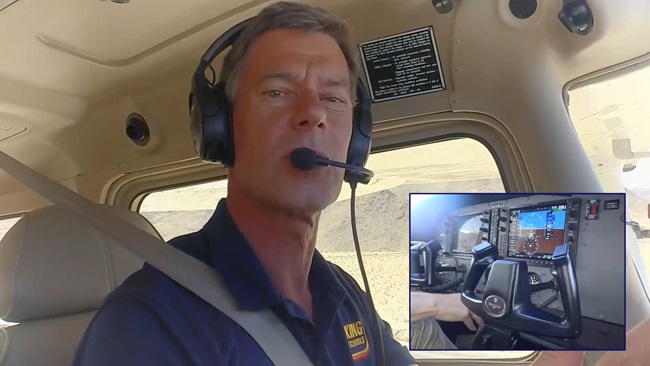Proficient Pilot: Where the fun is
Excitement below the flight levels
My first officer was reviewing a pamphlet introducing the then-new airspace reclassification system. He slowly shook his head. “How is anyone supposed to remember all this?”
The flight engineer had just finished cross-feeding fuel and advised, “Airline pilots don’t have to worry about that stuff. Put that thing away and call for some coffee.”
With tongue planted firmly in cheek, the co-pilot said that the new system would be much easier to learn if each type of airspace were given a name that described its purpose. “Why not,” he suggested, “call Class B airspace a Terminal Control Area, and refer to Class D airspace as an Airport Traffic Area?” (Those were, of course, the names previously used.)
As an airline captain who divided his time almost evenly between the flight deck of a heavy jet and the cockpits of light airplanes, I knew that VFR pilots have to cope with airspace complexities and conform to regulations about which airline pilots couldn’t care less. Those who fly strictly IFR are not concerned about the two dozen or so types of airspace and their restrictions. They simply point their airplanes according to the dictates of air traffic control, and this automatically threads them through the airspace maze with which VFR pilots must singlehandedly cope.
Operating a piston-powered airplane is more demanding in many ways than steering a jetliner across the sky. This is because fast, heavy aircraft are much less affected by many of the challenges that confront light airplane pilots.
For example, when a jet engine fails, the crew is typically in no hurry to do anything about it. It is simply a matter of attending to a few housecleaning chores. But when a piston engine fails, its pilot can have his hands full, especially in the case of a single. When flying a twin, a pilot must act proficiently and expeditiously to prevent the drag of a windmilling propeller from excessively eroding performance and directional control.
Structural icing? No problem here either. Modern fanjets are so impervious to icing that many jets don’t even have anti-icing or deicing systems to protect the wings or tail. A couple of leading-edge flaps on each wing might be heated, and that’s about it.
Turbulence typically isn’t of much concern either (except when concerned about passenger comfort). The high wing loading of large jets allow them to slice through gusts that could easily upset or damage some light airplanes.
Flying a small airplane in challenging IFR weather at night while in high-density airspace can be much more demanding than handling a jet under similar circumstances. The lone general aviation pilot can become overwhelmed at such a time, especially because he usually does not have a trained crewmember in the other seat to share the load. The outcome of such a flight often is determined by the pilot’s competency, currency, and cunning—which leads to a point.
Airline and bizjet crews have excellent safety records. This is not necessarily because they are better pilots. It is because their airplanes have superior performance and redundant, more-reliable equipment. Such pilots also participate regularly in recurrent training programs—colloquially known as “retreading.” An airline pilot must periodically review and practice emergency procedures that he or she probably will never be required to employ—but they’ll be ready. With the exception of a flight review, most lightplane pilots operate without benefit of periodic training to remove and prevent rust. This deprives them and their passengers of the increased safety they could otherwise enjoy.
It has become a cliché that obtaining a new certificate or rating is a license to learn. Part of that learning process involves gaining experience, but it also should include periodic instruction to learn new procedures and sharpen skills.
An adage claims that airline flying is hours of monotony punctuated by moments of stark terror. But jet aircraft have thankfully become so reliable that it can be said that flying them usually involves hours and hours of boredom—period—which, of course, is the way it should be.
This is why so many airline pilots also fly light airplanes, because that’s where the fun is.
Web: barryschiff.com



